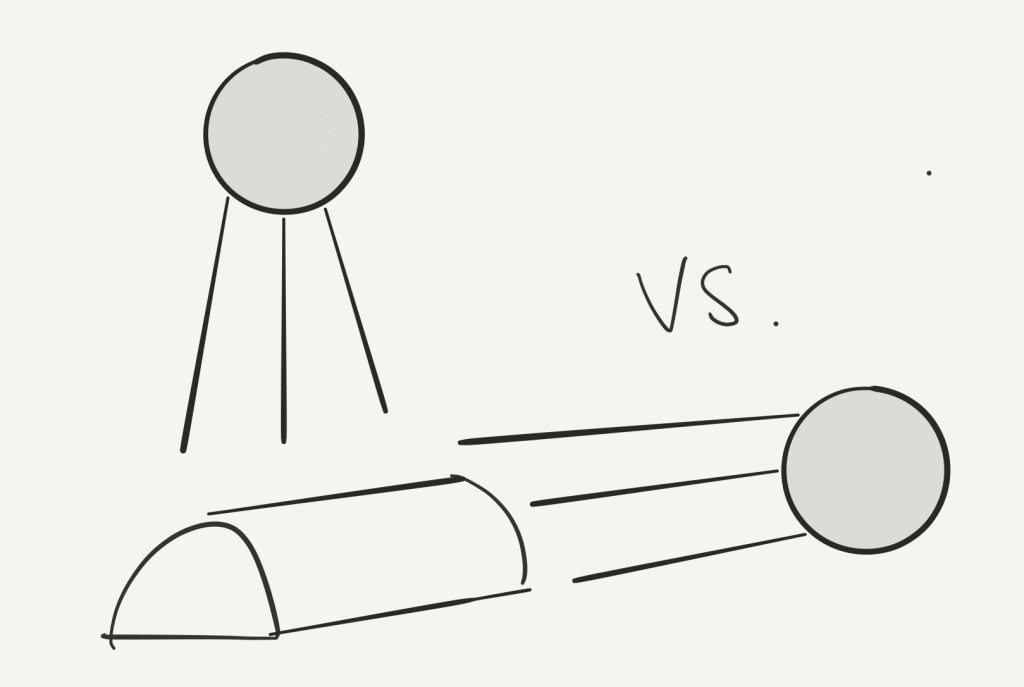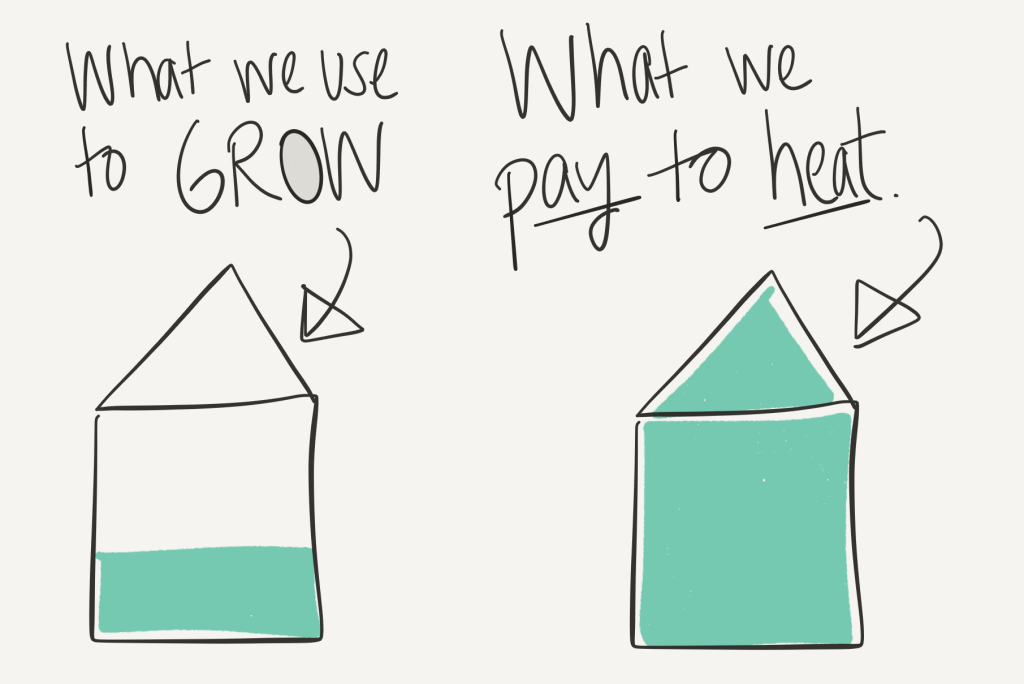Takeaways:
- Space & energy use (2:01)
- Profit is planar while our costs are volumetric. (7:10)
- The issue & advantages of aeroponics (7:43)
- The issue with multi-sided and immobile towers (11:40)
- Understanding how light moves through the mass of the Towers (12:34)
- Volumetric farming (13:38)
How it all started
We live (and farm) in Wyoming… which means that winter can get pretty ugly. For at least a couple weeks during the winter, we hit temperatures of about -30ºF regularly and all winter long we can see winds that move from 30 to 60 mph.
When there’s that much wind, you lose a lot of heat.
This was our first problem. We were consuming a ton of energy to keep crops alive.
The second challenge was that we have a really low sun angle. The sun comes up in the in winter, scoots across the horizon, then goes down. This means that we have not only short day length, but low light quality.
*Originally, we weren’t even thinking about artificial light too much.
In a traditional greenhouse, you have a lot of plants growing on a horizontal plane. Light quality, when the sun moves over the greenhouse, is pretty good. But our sun wasn’t moving over the greenhouse (as much). This gave us a reason to think about light differently. Specifically, we had to stop thinking about horizontal planes being the most efficient way to grow in a greenhouse.
I began to realize that in our building, we have all of this volume to heat and build out, but we’re thinking on a plane to grow.
Basically, our profit is planar while our costs are volumetric.
First I tried aeroponics to solve these problems.
I thought, “This is inefficient. There’s got to be a better way.” So I started looking around, and the first thing I started messing with was aeroponic towers with pockets or holes. The simplified description is that they are round tubes with pockets drilled or shaped into them where the plants are grown. (We will be covering aeroponics in a future course.)
I really struggled with aeroponics, which is difficult in environments that you don’t have a ton of control over. That’s because the inside of the growing equipment is basically air with the roots dangling down into it. There’s not much to buffer temperature and humidity, so you have to keep the interior temperature incredibly stable, and you have to keep the mist going all the time. Altogether, I was unhappy with aeroponics.
BUT I did see something really interesting come out of the data as I did the analysis.
I was comparing the plants from aeroponics, from a gravel bed, and from NFT troughs. Needless to say, production from the media beds and NFT was better because those are more resilient systems. But what I found was that while the grams per head was lower, the grams per square foot was almost three times as much. This told me that there was something to this.
This was my Masters Degree.
So what happened during my Ph.D.?
I had noticed that production was higher for the vertical aeroponic system, but the technique was too difficult to be used on a farm. So what I needed to start thinking about was how to take advantage of what I had learned during my Masters to build something that was simple, manufacturable, and able to be automated. (The issue with some of the vertical designs I had played with during my Masters was that is was they couldn’t be moved, so everything had to be done in place. We had to climb up a ladder or stool to plant and again to do pest control or plant maintenance, and again to harvest. It increased the labor costs. This is why it was so important to have something that could be automated.)
I still needed to understand how light was moving through the mass.
I took the ZipGrow Towers and stacked them front to back in a mass, in rows. I began to understand what the light was doing and how we were using it. To do this I suspended photometers throughout the mass of towers. What I discovered from that data was that I could use my light much more efficiently, ultimately allowing me to grow more efficiently.
And all of this would be done on multiple planes.
This meant that I could get the high production of volumetric growing in a way that worked in favor of labor costs, instead of against labor costs! In fact, costs per head of lettuce came down from other techniques.
Having equipment that could be used volumetrically in an efficient way opened up possibilities.
The first was for people with constrained space (like urban farmers), who could now use a small amount of space to grow a lot.
Another was for people like us who go through so much wood to heat our greenhouse, we can reduce the amount of wood burnt per unit of output. (Or in other situations, lower heating or lighting costs per unit of output.)
Another way to think about this is that we are removing light as the bottleneck and lower it to something else.
If you want to understand even more clearly, I wrote about 250 pages on it. You can request a free copy of the dissertation if you are a registered unlimited member of Upstart U by emailing halle@brightagrotech.com.




